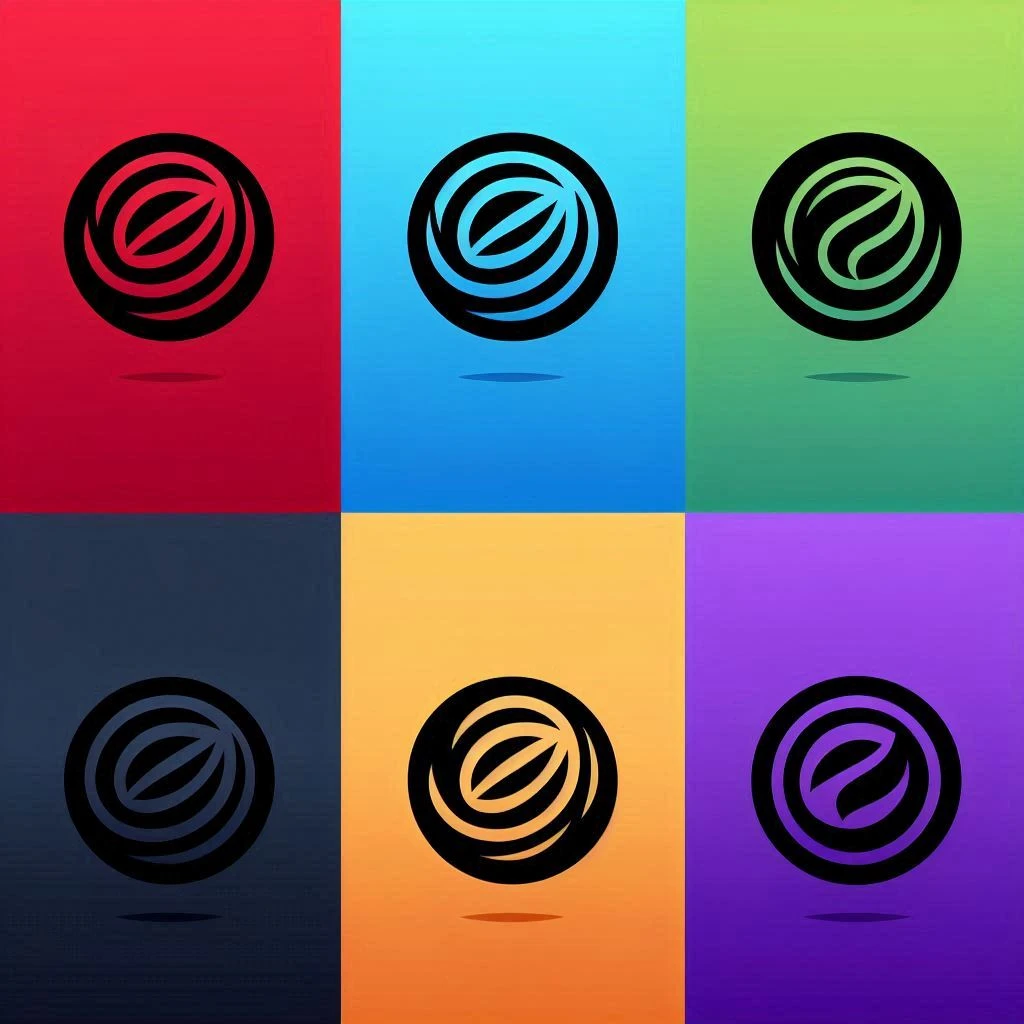
One of the most important aspects of logo design is contrast. Without proper contrast, even the most beautifully designed black logo can fade into the background. High contrast ensures that your logo stands out whether it's embroidered on dark fabrics, used in digital media, or printed on marketing items.
Let's suppose that when placing a black logo on dark backgrounds, borders or shadow effects creates enough contrast to make the logo stand out. Meanwhile, on light backgrounds, the sharp, bold look of black already creates high contrast.
Black logos are widely used in attractive branding for several reasons:
Black is a color that represents professionalism and elegance. Whether you work in the IT, fashion, or luxury industries, black conveys trust and power.
Black color is used in different types of fashions, such as minimalistic to more elaborate designs. It works perfectly on both digital and print media, making it a popular choice for businesses with a wide range of purposes.
Unlike trendy colors that may fade over time, black is classic and enduring, giving brands a long-lasting, iconic presence.

While black logos are stylish, they can be difficult to use across various background colors, especially when you move beyond light and neutral tones. A black logo on a black or dark-colored background. For example, a black logo might be readily overlooked on a dark background. Similarly, some vibrant colors may overpower black, leading to poor visibility.
However, with a few design adjustments, these challenges can be overcome.
.webp)
When facing dark backgrounds, the key to visibility is adding visual elements that separate the logo from the background. Here are some tips:
A thin white or light-colored outline around your black logo can help it stand out on dark backgrounds. This is one of the most effective ways to boost contrast.
Soft drop shadows or glows can create depth, giving your logo more dimension and ensuring it doesn't blend into the background.
For digital applications, try using a semi-transparent overlay over the background, helping to make your logo stand out.
If you want to adapt your logo for dark mode applications or embroider it on dark fabrics, these steps will make your design more legible and impactful.

Light backgrounds naturally add more contrast for black logos, but there are still ways to enhance visibility and style:
Add vibrant colors: Adding small vibrant colors to the design gives a visual break from the black and grab the attention more successfully.
Experiment with Bold Typography: If your black logo includes text, using bold fonts will ensure readability on light backgrounds.
In custom embroidery, this is where black logos often shine. light fabrics, the contrast is high, making the design sharp and clear. True Digitizing helps you enhance your black logo your black logo for these kinds of surfaces.

Logo placement significantly impacts how visible it is on different colored backgrounds. When designing or embroidering your logo, consider the following tips:
If your background includes complex patterns or multiple colors, centering the logo can help it draw attention amidst the visual noise.
For digital or print designs with a minimalist aesthetic, placing the logo in the top-left corner is a wise choice. It naturally catches the eye while allowing the rest of the design to breathe.
On clothing or accessories, place your logo where it can be easily seen. For example, the front of hats or the left chest of shirts.
Before committing to your black logo design, it’s essential to test it across various backgrounds. Whether you're working on digital branding or embroidery projects, make sure it stands out by following these steps:
Mock-Up Designs: Use design tools like Canva to see how your logo looks on different background colors. This will help you understand its versatility.
Check Dark and Light Modes: With the increasing use of dark mode on websites and apps, it’s essential to test your black logo in both dark and light modes to ensure consistency.
Nick William has been immersed in the world of embroidery digitizing for over 20 years, earning 25 industry awards throughout his career. As a 3rd generation embroidery expert, Nick’s journey started in his family’s workshop, where he learned the art of digitizing before the rise of modern software. He has worked with leading commercial embroidery businesses and has shared his expertise with over 75,000 home and professional embroiderers. As an author at True Digitizing, Nick is passionate about teaching others how to create beautiful, precise designs through easy-to-follow tutorials and expert advice.
Categories

Is SVG A Vector File? Here’s the Shocking Truth Everyone Should Know
17-04-2025

6 Popular Types of Vector Files 2025
16-04-2025

How To Create A Vector File: Step-by-Step Guide
15-04-2025

What Is A Vector File? Everything You Need To Know
14-04-2025

Best Janome Embroidery Machines You Need to Check Out in 2025
11-04-2025

Custom Embroidery Digitized Designs For Hoodie Lovers
10-04-2025

Best Embroidery Patches For Your Clothes
10-04-2025

Professional Online Photo Digitizing Services Provided by True Digitizing
09-04-2025

Best Babylock Embroidery Machines For You
09-04-2025

Barudan Embroidery Machines: From Beginners to Professionals
04-04-2025